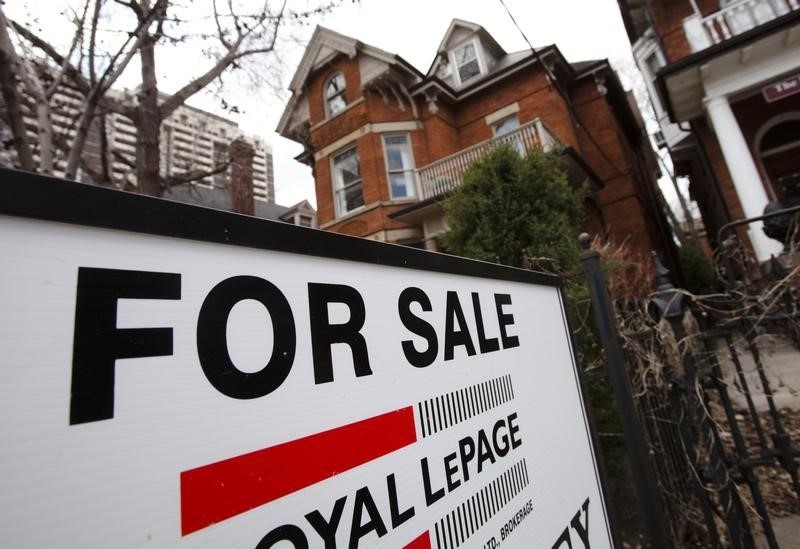If you’re looking to break the ice at your next Toronto cocktail party, just mention real estate.

Every day brings fresh headlines like this: “Toronto home prices soar 33.2 per cent year over year.” The average price of a Toronto home jumped from $688,000 to $917,000 over that period. That’s 11.7 times the median family income in the city. Contrast that with other markets, such as St. John’s, where the average house costs $262,000 — three times the median income of families in that city — and you can see why Torontonians are choking on their canapes.
Naturally, this state of affairs brings with it the usual calls to “do something about it.” Home affordability groups, big banks, and naturally, politicians are all offering up solutions, most of them in the form of a tax — a Vancouver-style foreign buyers’ tax, a vacant homes tax, a speculators’ tax.
An extension of rent control is being proposed to curb rent increases in a market where the vacancy rate sits below one per cent. Not to be left out of the conversation, Finance Minister Bill Morneau has called for a meeting with Toronto Mayor John Tory and provincial Finance Minister Charles Sousa ahead of the provincial budget, set for April 27. The budget likely will contain some measures designed to address the housing crisis. For the federal Liberals, there’s ample incentive to try to take credit for it in the vote-rich region of the GTA.
- Posters promoting ‘Steal From Loblaws Day’ are circulating. How did we get here?
- Video shows Ontario police sharing Trudeau’s location with protester, investigation launched
- Canadian food banks are on the brink: ‘This is not a sustainable situation’
- Solar eclipse eye damage: More than 160 cases reported in Ontario, Quebec
But the cure could be worse than the disease — partly because we have no idea what the disease really is, or how we got it. Are foreign investors to blame? Domestic investors? Immigrants? The Ontario Municipal Board? NIMBYism? The Green Belt? Low interest rates?
The list of potential culprits is longer than the average bidding war for a house, which can feature dozens of offers and mean months of frustration for potential homeowners.
The available data suggest foreign buyers are not the culprits behind Toronto’s white-hot housing market. A survey by Ipsos done for the Toronto Real Estate Board found that foreign buyers accounted for 1,061 sales in 2016, just five per cent of all sales across the GTA. Of those foreign buyers, 40 per cent were purchasing the home as a residence, 25 per cent with the intention of renting it out, and 10 per cent as an investment property that they planned to leave vacant.
The real problem is one of basic supply and demand, particularly when it comes to single-family homes in or about the city core. Listings are down and developers aren’t building that type of housing; when you can build a 90-storey condo building, it simply makes no economic sense. And there’s simply no room to put in more single family homes. Or is there?
Actually, there is undeveloped land near downtown Toronto. The Portlands comprises 325 hectares of mostly industrial land, now the subject of flood protection initiatives by the city as its seeks to revitalize the areas around the Lower Don River. Detailed plans have been drafted to transform the Portlands’ Villiers Island into a mixed use “island community” with parks, housing and a community centre.
In its current form, the plan would see condo buildings from 16 to 29 storeys; developers are already submitting applications for larger buildings. Meanwhile, the city is asking the Ontario Municipal Board (OMB) to delay approval until consultation on its own plans is finalized.
Why not appeal to the OMB to push for development of single-family homes instead of condos? Fingers often point at the OMB as the root of Toronto’s development problems. Established in 1906, the body provides an independent, extra-judicial forum to settle challenges to municipalities’ development plans. Critics claim it gives developers too much power; others say it subjects them to too many lengthy delays. The province is conducting a review of the OMB and 15 Toronto citizens’ organizations have mobilized to get rid of the organization, to give more power to local authorities to guide development in their neighbourhoods.
But as the Toronto Star recently pointed out, the OMB isn’t the real culprit: It exists to implement provincial land-use policies, which are set by politicians at Queen’s Park. Those include the establishment of the province’s much-celebrated “Green Belt” in 2005. This decision restricted development on 800,000 hectares of land surrounding the GTA, from the Niagara Escarpment in the west to the Oak Ridges Moraine in the east. Some real estate analysts say this has pushed up home prices by limiting the amount of land available for development. But Premier Kathleen Wynne has called the Green Belt “the lungs of Toronto,” and says restrictions will not be loosened.
Unless officials want to restrict condo development and open up more land for single-family homes, the number of them needed to bring down prices will not be built. And even if they were built, those houses wouldn’t be built in time to satisfy buyers’ immediate demands. And you can’t force people to sell their homes. And taxing buyers won’t bring down prices either.
In other words, government can intervene, but its tools will be blunt instruments at best — taxes that will bring in revenue without solving the underlying problem. Faced with limited supply, prices will stay high until demand weakens — and while interest rates are low, people will be able to pay them.
The Bank of Canada could raise its rate, of course — nothing else could cool demand. But the implications of such an increase would be felt far from Toronto. And that’s a political price that no one, in Ottawa or Toronto, cares to pay.
Tasha Kheiriddin can be heard between noon and 2 p.m. ET on Toronto Talk Radio AM640. She’s also a columnist with Global News and iPolitics.ca, where this piece first appeared.








Comments